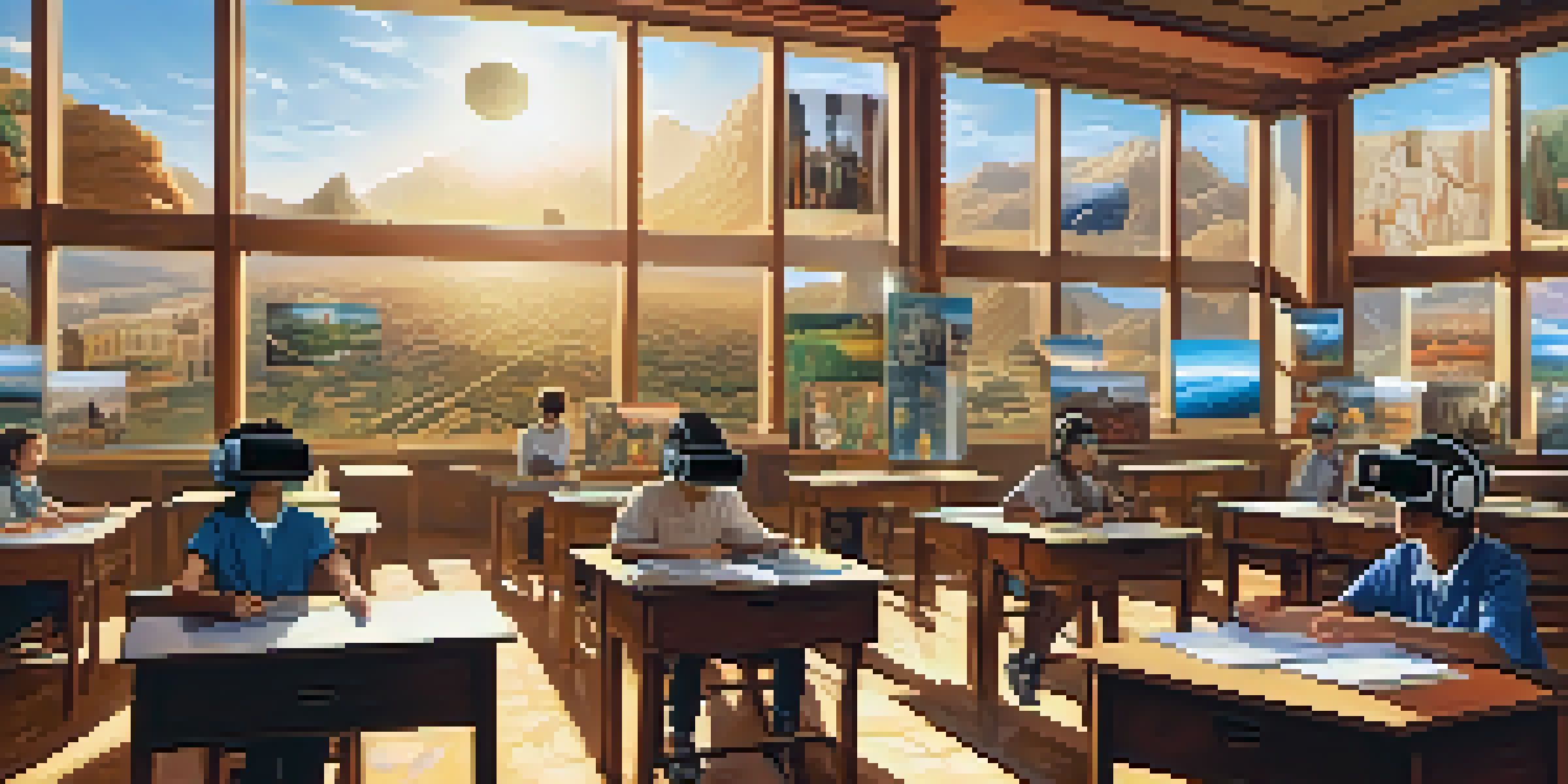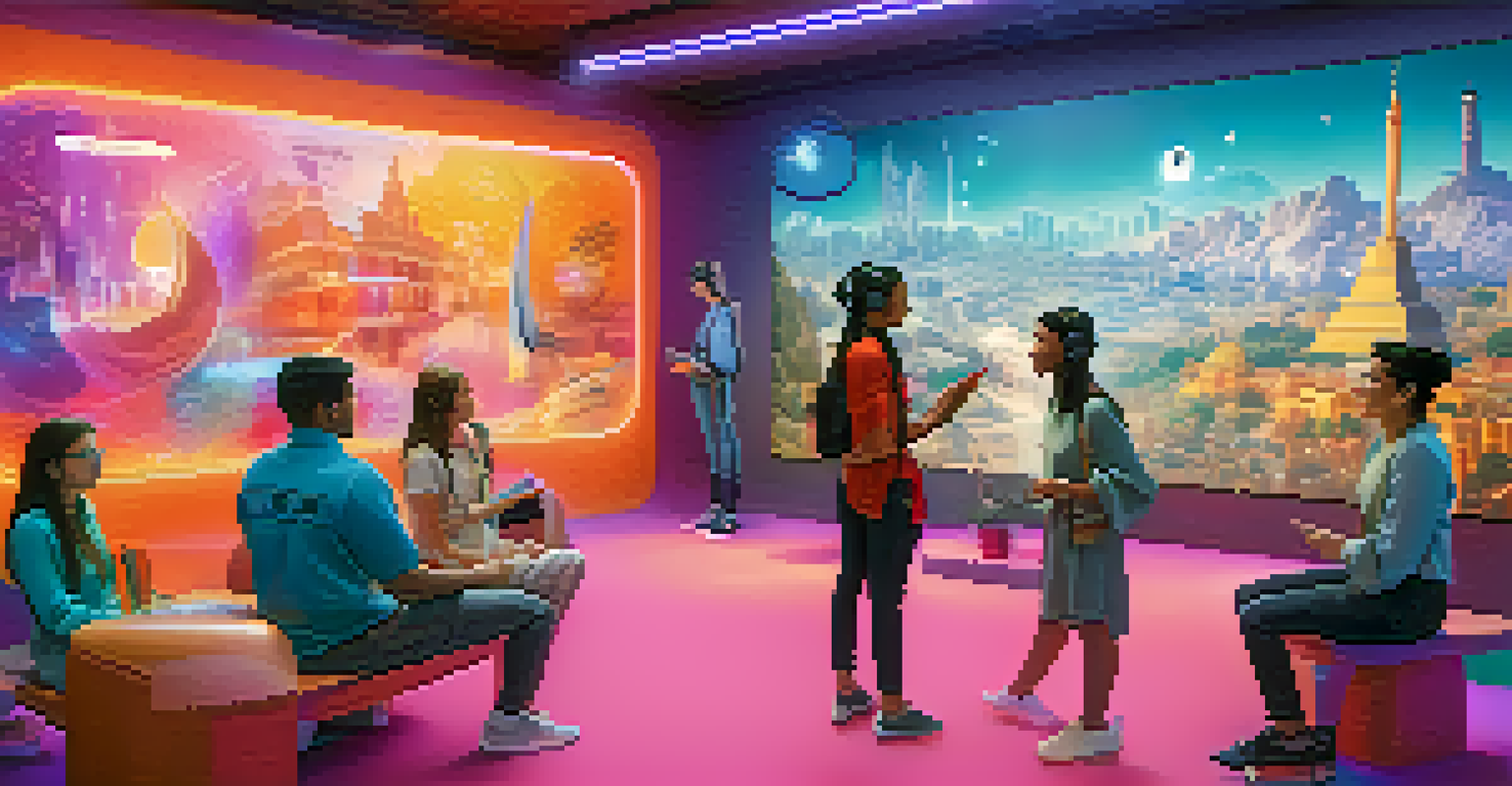The Future of Assessment: Virtual Reality in Evaluating Learning

Understanding Virtual Reality in Education
Virtual reality (VR) is transforming various sectors, and education is no exception. It immerses learners in realistic environments, enhancing their experience beyond traditional classrooms. Picture a student exploring ancient civilizations or conducting scientific experiments—all from the comfort of their home. This engagement can lead to deeper understanding and retention of information, making learning more effective.
The greatest benefit of virtual reality is the ability to create immersive experiences that facilitate learning in ways that traditional methods cannot.
As educational institutions adopt VR, they can create tailored learning experiences that cater to different learning styles. Some students thrive in hands-on environments, while others may benefit from visual simulations. By leveraging VR technology, educators can ensure that all students have the opportunity to engage meaningfully with the material. It's about creating a more inclusive and adaptable educational landscape.
However, the integration of VR into assessments raises questions about its effectiveness and practicality. How can educators measure learning outcomes in a virtual environment? This article will explore these challenges while highlighting the potential benefits VR assessments can bring to the table.
The Benefits of VR Assessments
One of the most significant advantages of VR assessments is that they provide a safe space for students to demonstrate their skills. Imagine a medical student practicing surgery in a virtual hospital—mistakes made here don’t have real-world consequences. This type of practical experience can build confidence and competence, ensuring students are better prepared for real-life situations.

Additionally, VR assessments can offer real-time feedback to learners. Instead of waiting for a teacher to grade a paper, students can receive immediate guidance on their performance. This instant feedback loop helps learners understand their strengths and areas for improvement right away, encouraging continuous development and growth.
VR Enhances Learning Experiences
Virtual reality immerses students in realistic environments, making learning more engaging and effective.
Moreover, VR assessments can accommodate a wide range of scenarios that may be difficult to replicate in traditional settings. For instance, simulating emergency situations can help students practice critical thinking and decision-making under pressure. This dynamic method of assessment not only evaluates knowledge but also assesses application and problem-solving skills in realistic contexts.
Challenges in Implementing VR Assessments
Despite the potential benefits, there are challenges in implementing VR assessments on a broad scale. One of the biggest hurdles is the cost associated with VR technology. Schools and institutions may struggle to afford the necessary equipment and software, which can limit accessibility and equity among students. Ensuring all learners have access to these tools is crucial for widespread adoption.
Education is not the filling of a pail, but the lighting of a fire.
There are also technical challenges to consider. Not every classroom is equipped with the infrastructure needed to support VR learning, such as high-speed internet or compatible devices. Teachers may require training to effectively integrate VR into their assessments, and without proper support, the technology may not reach its full potential.
Lastly, there is a need for research into the validity and reliability of VR assessments. Educators must ensure that these new methods accurately measure learning outcomes and align with educational standards. Ongoing evaluation and adaptation will be vital as this technology continues to evolve.
Real-World Applications of VR Assessments
Several educational institutions are already pioneering the use of VR for assessments. For example, some medical schools have started using VR simulations to assess students' clinical skills. By immersing students in lifelike scenarios, they can evaluate their decision-making abilities and practical knowledge in a controlled environment.
Additionally, language learning platforms are incorporating VR assessments to gauge fluency and conversational skills. Students can engage in virtual conversations with native speakers, allowing teachers to assess their language proficiency in an interactive context. This method not only evaluates knowledge but also enhances students' real-world communication skills.
Benefits of VR Assessments
VR assessments provide safe, real-time feedback and simulate real-world scenarios, enhancing skill demonstration and learning outcomes.
These examples showcase the versatility of VR assessments across various disciplines. As more institutions experiment with this technology, we can expect to see innovative approaches to evaluating learning that prioritize engagement and effectiveness.
The Role of Educators in VR Assessments
Educators play a crucial role in the successful integration of VR assessments in learning environments. They are responsible for designing assessments that align with learning objectives while leveraging the unique capabilities of VR technology. This means understanding how to create immersive experiences that accurately measure students' knowledge and skills.
Moreover, teachers must embrace ongoing professional development to stay current with emerging technologies and pedagogical strategies. By collaborating with tech experts, educators can develop assessments that are both innovative and pedagogically sound. This partnership will help ensure that VR assessments are effective tools for learning evaluation.
Ultimately, educators must advocate for and support the use of VR technology in their schools. By sharing success stories and best practices, they can inspire others to explore the benefits of VR assessments, paving the way for a more dynamic and engaging educational landscape.
Future Trends in VR Assessments
As technology evolves, we can expect to see emerging trends in VR assessments that further enhance their effectiveness. For instance, the integration of artificial intelligence (AI) could allow for personalized assessments that adapt to each student's learning pace and style. This level of customization could lead to more accurate evaluations and improved learning outcomes.
Additionally, advancements in VR technology may enable more immersive and interactive assessment experiences. Imagine students participating in complex simulations that require collaboration and communication with peers in real time. This shift toward group assessments can foster teamwork skills critical for success in the modern workforce.
Challenges of VR Implementation
Despite its advantages, the widespread use of VR assessments faces challenges like cost, technical infrastructure, and the need for research on effectiveness.
Finally, as the demand for remote learning continues to grow, VR assessments will likely expand beyond traditional classrooms. This flexibility can create opportunities for students worldwide to participate in assessments that were once limited to specific geographical locations. The future of assessment is bright, and VR is at the forefront of this transformation.
Conclusion: Embracing the VR Assessment Revolution
The future of assessment is undoubtedly being shaped by virtual reality, offering exciting possibilities for evaluating learning. As educators and institutions embrace this technology, they have the opportunity to create more engaging, effective, and inclusive assessment methods. However, it will require collaboration, investment, and ongoing adaptation to overcome the challenges associated with its implementation.
By focusing on the benefits of VR assessments and addressing potential obstacles, the education sector can pave the way for a more dynamic approach to learning evaluation. This transformation can lead to enhanced student experiences and better-prepared graduates, ready to tackle the complexities of the modern world.

In conclusion, as we stand on the brink of this VR assessment revolution, it's essential for educators, institutions, and policymakers to work together to harness its potential. With commitment and innovation, we can create a future where assessments not only measure knowledge but also inspire a love of learning.